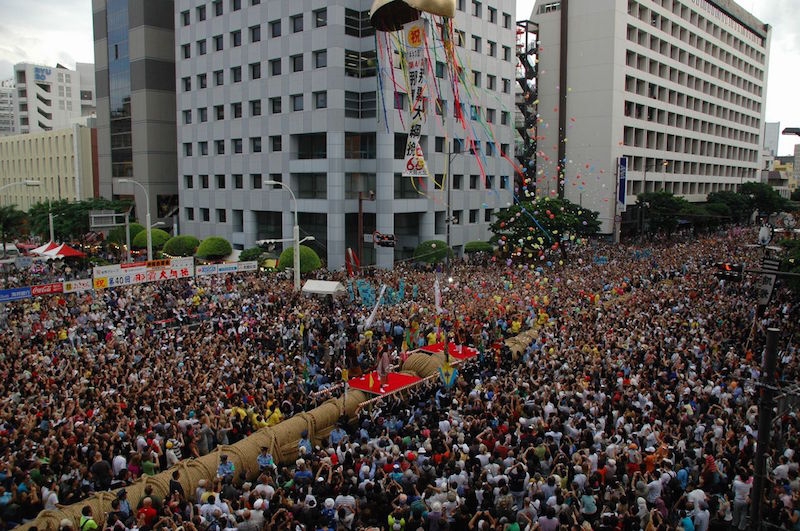
Image credit: Benichan
The star of Naha Tug of War Festival: the gigantic rope that lies on Route 58 in the downtown area of Naha, Okinawa’s capital city, for one day every year in October. This largest traditional festival in Okinawa has its roots dating back to the customs of the Ryukyu Kingdom.
Many people may not be aware that Okinawa used to be an independent nation called the Ryukyu Kingdom until it was forcefully annexed by Japan in 1879. The island’s unique culture and influences from the region can be observed in many aspects of Okinawan life. The locals possess a strong Okinawan pride and identify themselves as “uchinanchu” or “sea people” in their local Okinawan dialect.
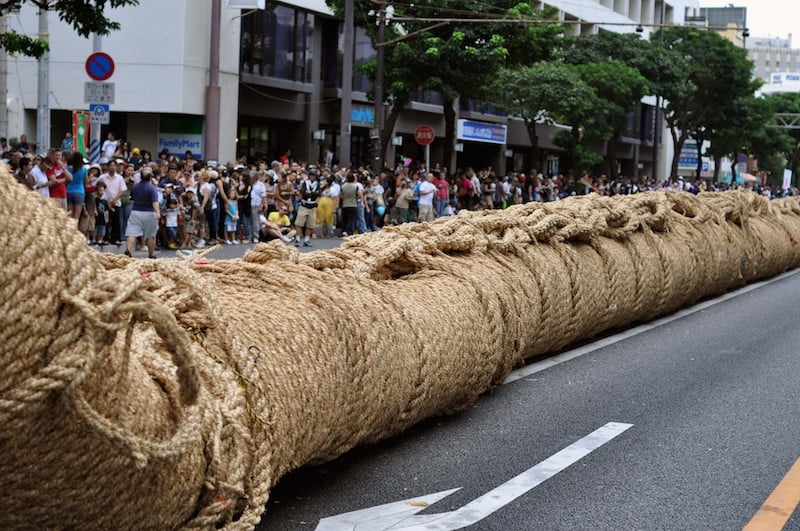
Image credit: sugoipix
The distinctive Okinawan traditions are showcased during Naha Tug of War Festival. In the past, tug of war events were held in farming and rural communities to pray for abundant harvest and prosperity. The long-celebrated custom was revitalised in 1971 to commemorate the 50th anniversary of Naha Municipal Government. Since then, the renowned event has been celebrated every year to preserve cultural heritage, strengthen bonds within the Naha community and promote tourism.
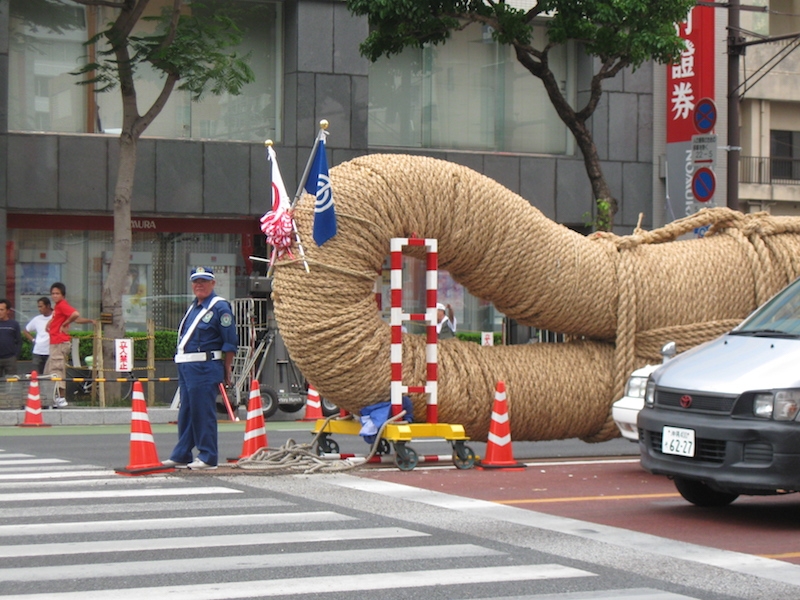
Image credit: Docrings~commonswiki
The formidable rope was registered in the Guinness World Records as the largest rope made of rice straw in 1995 and 1997. Its total length was 186 metres, with a diameter of 1.59 metres and weighing 40 tons and 220 kilograms when it broke the world record in 1997. Even though Naha no longer holds this world record, the rope continues to grow over the years. The rope is formed by connecting the female rope “miinna” and the male rope “ouunna” ceremoniously with a huge stick called “kanuchibou.”
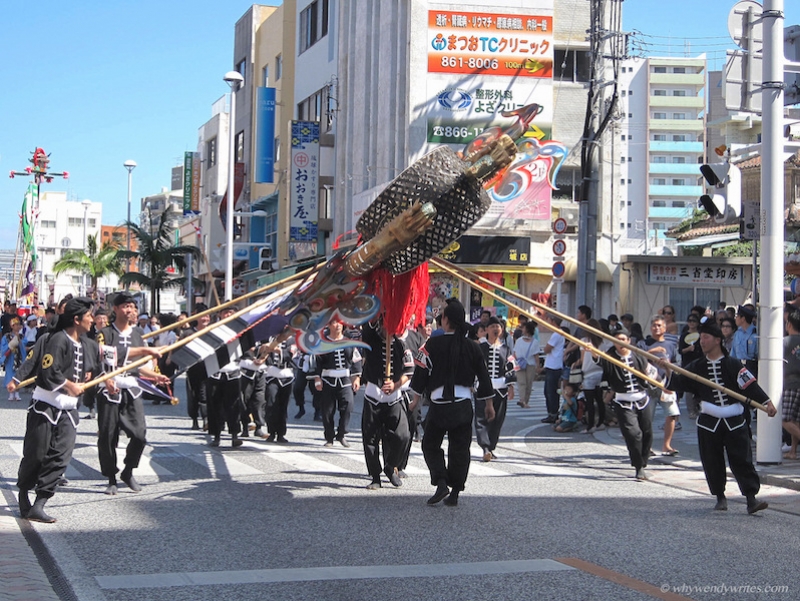
The festivities last for three consecutive days spreading over the weekend with the national holiday – Health and Sports Day. The tug of war contest is usually held on the second day of the festival. The day starts with a colourful parade through the International Street. Tourists and locals cluster along the almost two-kilometre shopping street. The highlight of the parade is the “hatagashira” procession. “Hatagashira” are large bamboo poles that are decorated with the symbols that represent 14 local towns. The brave “hatamochi,” strong pole-bearers display their strength and team spirit as they carry their “hatagashira” with pride down the street.

Spectators are not only in awe of the pole-bearers’ prowess and tenacity but also entertained by firecrackers and a myriad of performances like karate. A birthplace of cross-cultural arts, Okinawa is the bedrock of karate where the ancient combat style is combined with regional marital art forms and spread to Japan and the rest of the world.
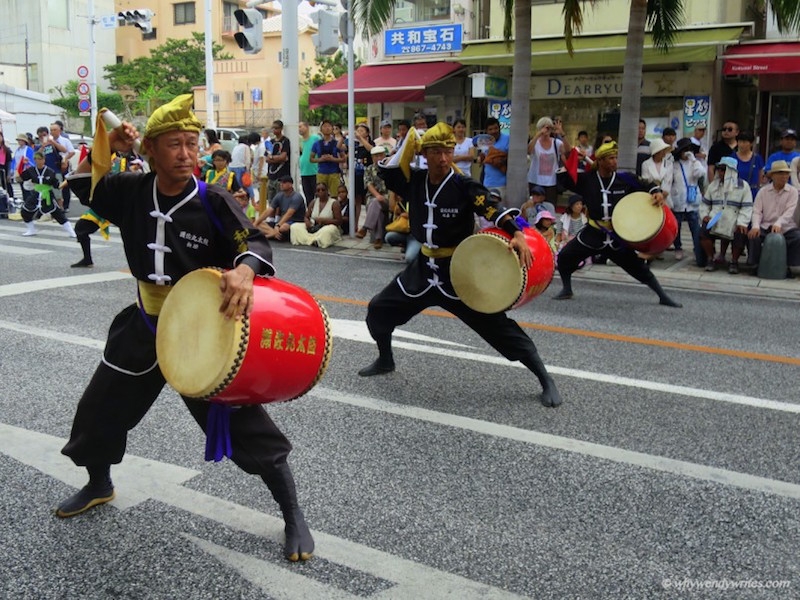
My favourite performance is definitely the spirited “eisa” dancers who play drums of different sizes and move energetically to the rhythm of the music. A traditional folk dance, “eisa” is an essential part of Okinawa’s festivals.
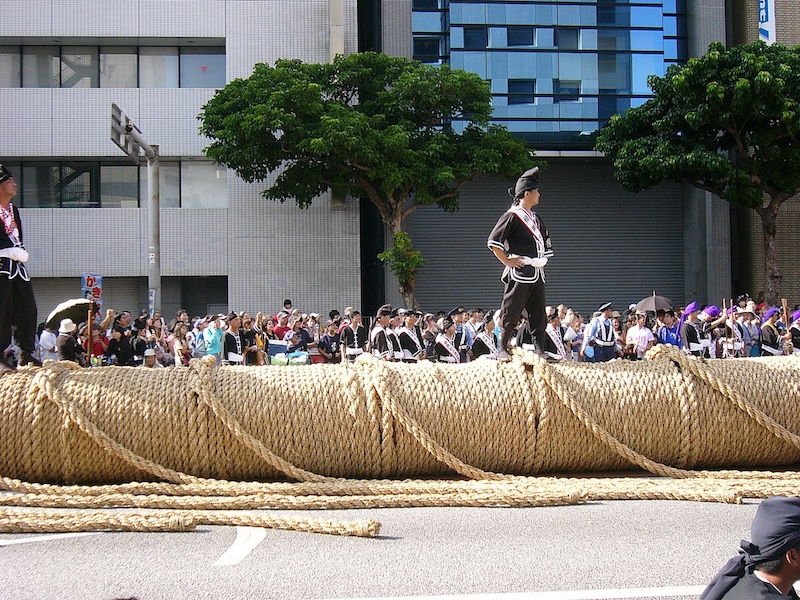
Image credit: M-ogino
Excited tourists and locals arrive at the tug of war arena before the competition to occupy a good spot where they can get a firm grip of the rope. It is impossible to pull the enormous rope so participants grab the smaller ropes that are suspended from the main rope. The participants’ fervent anticipation surrounding the start of the competition makes them “forget” their discomfort of squeezing with the crowds under the scorching sun.
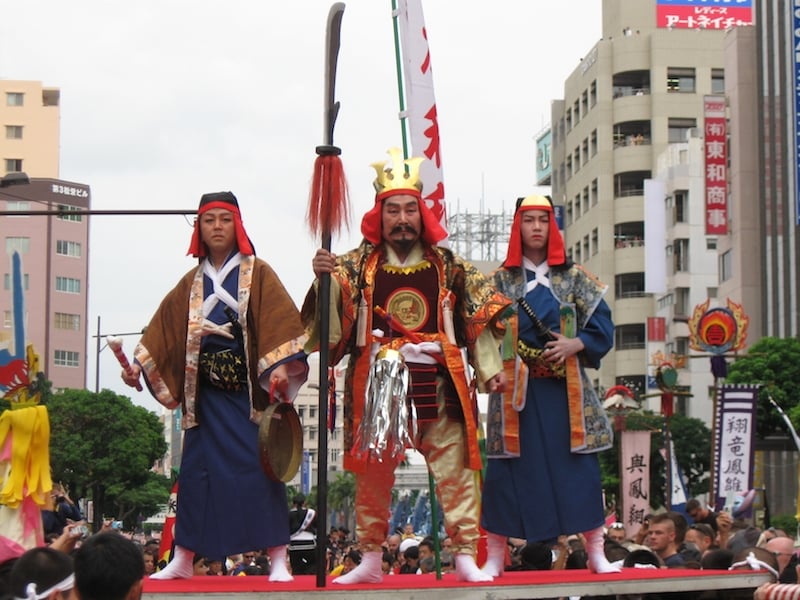
Image credit: Docrings~commonswiki
Finally, the battle with the East and West teams begins when the huge paper ball hanging above the middle of the rope bursts open and releases splendid steamers. The rivalry between the East and West is based on the competition between ancient rulers. On each side, “shitaku” or men dressed in costumes like Ryukyuan kings perform and engage in dramatic swordfight above the rope as participants pull the rope vigorously. Most foreign participants are clueless about which team they are pulling for. Ultimately, nobody really cares about the result as the euphoria of cheering and tugging is the most enjoyable part of the experience.
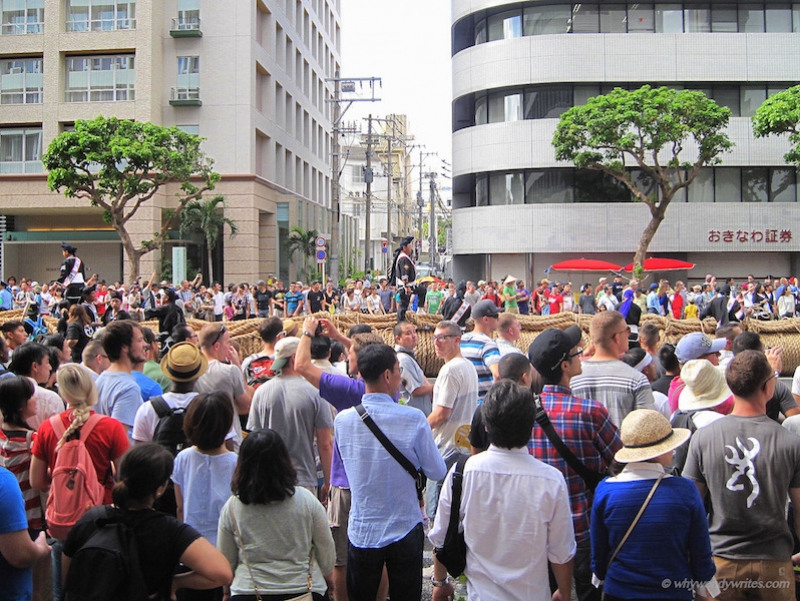
Eventually, the team that pulls the rope a considerable distance towards their side within the time limit will be declared victorious. The end of the contest is as riotous as the contest itself as participants scramble to get a small piece of the rope. It is a customary practice to return home with a keepsake of the rope that is believed to bring good luck.
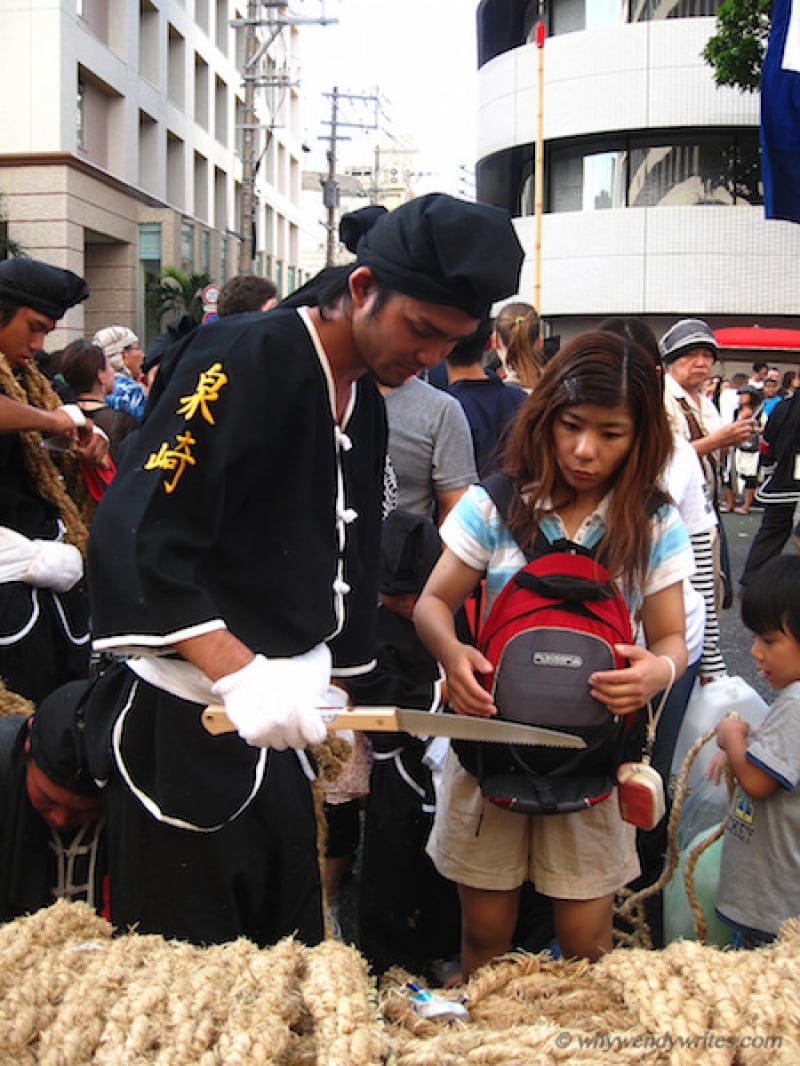
The memorable day concludes with performances at Onoyama Park. Fuelled by adrenaline from the tug of war contest, participants continue merry-making in the park and enjoy live music and festival delicacies. The best reward for a day’s tugging is Okinawa’s signature drink: Orion beer. The revelry grows to a climax with a spectacular firework show illuminating Naha’s night sky.
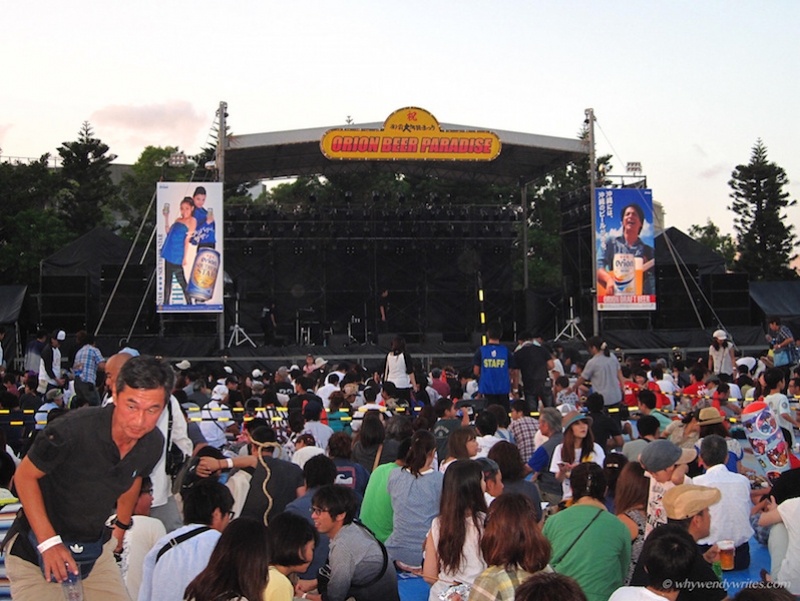
If you are lucky to be in Okinawa on 8 Oct 2017, get ready for an experience of a lifetime! If you plan to visit Okinawa in the future, do take note of other tug of war festivals like the more community-based Itoman Tug of War, which is held on 15 August of the lunar calendar, and Yonabaru Great Tug of War Festival that fill Okinawa’s yearly calendar.




